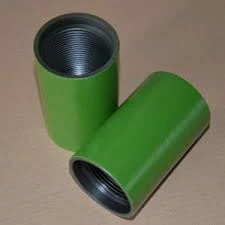- Afrikaans
- Albanian
- Amharic
- Arabic
- Armenian
- Azerbaijani
- Basque
- Belarusian
- Bengali
- Bosnian
- Bulgarian
- Catalan
- Cebuano
- Corsican
- Croatian
- Czech
- Danish
- Dutch
- English
- Esperanto
- Estonian
- Finnish
- French
- Frisian
- Galician
- Georgian
- German
- Greek
- Gujarati
- Haitian Creole
- hausa
- hawaiian
- Hebrew
- Hindi
- Miao
- Hungarian
- Icelandic
- igbo
- Indonesian
- irish
- Italian
- Japanese
- Javanese
- Kannada
- kazakh
- Khmer
- Rwandese
- Korean
- Kurdish
- Kyrgyz
- Lao
- Latin
- Latvian
- Lithuanian
- Luxembourgish
- Macedonian
- Malgashi
- Malay
- Malayalam
- Maltese
- Maori
- Marathi
- Mongolian
- Myanmar
- Nepali
- Norwegian
- Norwegian
- Occitan
- Pashto
- Persian
- Polish
- Portuguese
- Punjabi
- Romanian
- Russian
- Samoan
- Scottish Gaelic
- Serbian
- Sesotho
- Shona
- Sindhi
- Sinhala
- Slovak
- Slovenian
- Somali
- Spanish
- Sundanese
- Swahili
- Swedish
- Tagalog
- Tajik
- Tamil
- Tatar
- Telugu
- Thai
- Turkish
- Turkmen
- Ukrainian
- Urdu
- Uighur
- Uzbek
- Vietnamese
- Welsh
- Bantu
- Yiddish
- Yoruba
- Zulu
1% 2% Stainless Steel Pipe Coupling for Reliable Plumbing and Industrial Applications
An Overview of 1% 202 Stainless Steel Pipe Couplings
Stainless steel has long been recognized as a superior material due to its impressive combination of strength, corrosion resistance, and versatility. Among various grades of stainless steel, 202 stainless steel is particularly notable for its unique properties and affordability. This article delves into the significance and application of 1% 202 stainless steel pipe couplings, emphasizing their value in various industries.
Understanding 202 Stainless Steel
Stainless steel 202 is an austenitic alloy that contains a nominal composition of chromium, nickel, and manganese. The composition typically consists of approximately 16-18% chromium, 4-6% nickel, and 7.5-10.5% manganese. Unlike the more common 304 stainless steel, 202 stainless steel is less expensive due to its lower nickel content. This makes it an attractive option for applications that require good mechanical properties without a heavy burden on costs.
One of the key features of 202 stainless steel is its excellent corrosion resistance, particularly against atmospheric conditions and mildly corrosive environments. This makes it a popular choice for indoor applications, as well as in specific outdoor scenarios where harsher conditions aren’t a primary concern.
The Role of Pipe Couplings
Pipe couplings play a crucial role in various piping systems. They are used to connect two pipes, allowing for seamless fluid flow from one segment to another. In industries such as construction, plumbing, and manufacturing, pipe couplings ensure that systems are reliable and efficient. The choice of material for these couplings is vital, as it directly impacts the longevity and performance of the system.
Why 1% 202 Stainless Steel?
When specifying pipe couplings, the term 1% 202 typically refers to a specific formulation or a minor addition to the standard 202 composition. The 1% designation could imply the controlled addition of certain alloying elements to enhance specific characteristics of the stainless steel, such as increased strength or improved corrosion resistance.
The use of 1% 202 stainless steel couplings brings several advantageous features
1. Cost-Effective Solution Due to its lower nickel content, 202 stainless steel is often more affordable than other stainless steel options like 304 or 316, making it an attractive alternative for large-scale projects.
1 2 stainless steel pipe coupling

2. Mechanical Strength While not as strong as 304 or 316, 202 stainless steel pipe couplings still provide adequate tensile strength and durability for many applications, making them suitable for less demanding environments.
3. Corrosion Resistance The inherent chromium content lends good corrosion resistance, especially in mild environments. This means that 1% 202 stainless steel couplings will perform effectively in various applications without significant risk of rusting or degradation.
4. Ease of Fabrication 202 stainless steel is relatively easy to weld and fabricate compared to other grades, which allows for more flexibility in design and installation processes.
Applications of 1% 202 Stainless Steel Pipe Couplings
1% 202 stainless steel pipe couplings are widely used across numerous sectors
- Construction and Architecture Often utilized in the construction of buildings, railings, and support structures, these couplings help provide strength and reliability.
- Plumbing The durability and corrosion-resistant properties make these couplings ideal for various plumbing systems, from residential to industrial applications.
- HVAC Systems 202 stainless steel pipe couplings are frequently employed in HVAC systems, where they help create secure connections in ductwork and piping systems.
- Food and Beverage Industry Although they are not typically used in highly corrosive environments, 202 stainless steel couplings can be sufficient for non-critical applications within the food and beverage sector, such as manufacturing equipment.
Conclusion
1% 202 stainless steel pipe couplings represent a cost-effective, reliable choice for many piping applications. Their balance of strength, corrosion resistance, and affordability makes them suitable for a wide range of uses across various industries. As businesses strive for efficiency and reliability in their systems, understanding the materials at their disposal is crucial for making informed decisions. Whether used in construction, plumbing, or HVAC systems, the role of 1% 202 stainless steel couplings is indispensable and continues to grow in importance in the modern industrial landscape.
-
Tubing Pup Joints: Essential Components for Oil and Gas OperationsNewsJul.10,2025
-
Pup Joints: Essential Components for Reliable Drilling OperationsNewsJul.10,2025
-
Pipe Couplings: Connecting Your World EfficientlyNewsJul.10,2025
-
Mastering Oilfield Operations with Quality Tubing and CasingNewsJul.10,2025
-
High-Quality Casing Couplings for Every NeedNewsJul.10,2025
-
Boost Your Drilling Efficiency with Premium Crossover Tools & Seating NipplesNewsJul.10,2025







